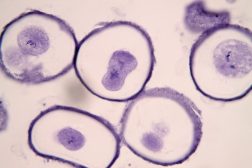Definition
noun
(taxonomy) A taxonomic order that includes the crocodilian species
Supplement
The order Crocodilia is comprised of all crocodilian species, such as true crocodiles, alligators, true gharials, false gharials, and caimans. They appeared in the Late Cretaceous period, therefore, around 83.5 million years ago. The true crocodiles (family Crocodylidae) are amphibious reptiles that inhabit land and aquatic habitats such as rivers, wetlands, and lakes. The crocodile, Crocodylus porosus, is adapted to a marine environment and often resides in brackish waters such as mangrove swamps, estuaries, lagoons, and deltas throughout the tropics in Australia, America, Africa, and Asia. An obvious morphological distinction of crocodiles that make them identifiable from other crocodilians, particularly alligators and caimans, is having a V-shaped snout. Another distinctive morphological feature is having a large fourth tooth in the lower jaw that fits into a constriction in the upper jaw when the mouth is closed. The alligators are large carnivorous reptiles. There are two known extant species of alligators, i.e. Alligator mississippiensis (common alligator) and Alligator sinensis (Yangtze alligator). Morphologically, alligators have a shorter and broader snout than the crocodile, thus, shaped like a letter U, and the large teeth of the lower jaw shut into pits in the upper jaw, which has no marginal notches. The caimans (subfamily Caimaninae of the family Alligatoridae) are a crocodilian group found living in several tropical habitats in South and Central America such as swamps, marshes, mangrove rivers, and lakes. They have a scaly skin and smaller in size compared with alligators. The gharials (family Gavialidae) are characterized by their distinctive narrow snout, which is advantageous for catching aquatic preys such as fish. They are native to the northern part of the Indian subcontinent. Another group from the same family is the false gharials. The false gharials differ from the true gharials in a way that the formers’ snout broadens considerably towards the base.
Variant:
- Crocodylia
Scientific classification:
- Kingdom: Animalia
- Phylum: Chordata
- Class: Reptilia
- Superorder: Crocodylomorpha
- Clade: Eusuchia
- Order: Crocodilia (Owen, 1842)
See also:







